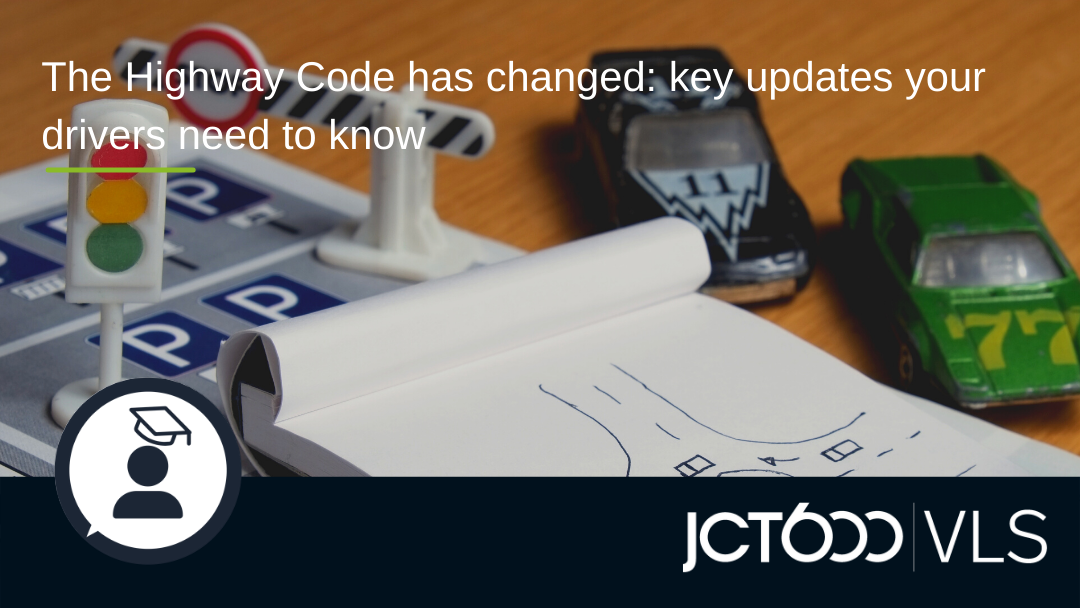There are some changes to the Highway Code that came into effect on 29th January, which your drivers need to be aware of. The new rules, if not followed, could lead to problems with insurance, fines, penalty points, court fees and even jail time. Here’s our handy guide to what’s new…
Change in hierarchy of road users
Possibly one of the biggest changes to the Highway Code is the hierarchy of road users. The new rule states ‘those who can do the greatest harm to others have a higher level of responsibility to reduce the danger’. This is to encourage drivers of larger vehicles to be more aware of vulnerable road users.
The new hierarchy (in order of highest priority) includes:
- Pedestrians
- Cyclists
- Horse riders
- Motorcyclists
- Cars / taxis
- Vans / minibuses
- HGVs
Drivers no longer have priority at junctions
This rule may take some getting used to for drivers, but it’s an important change to note. Drivers will no longer have priority at junctions. Instead, pedestrians, cyclists, horse riders and scooters are classed as more vulnerable and therefore have right of way at a junction.
So, if your driver is approaching a junction, and one of the above users are waiting, they must let them cross before pulling out of the junction.
Changes in cyclists’ position on roads
To make it safer for cyclists, there are changes to where they can position themselves on the road, this includes:
- Riding in the centre of their lane on quiet roads, in slower-moving traffic and at the approach to junctions or road narrowings, keeping at least 0.5 metres away from the kerb edge (and further where it is safer) when riding on busy roads with vehicles moving faster than them.
When overtaking cyclists, drivers can cross a double-white line if necessary, provided the road is clear.
There is also updated guidance on safe passing distances and speeds for people driving or riding a motorcycle when overtaking vulnerable road users, including:
- Leaving at least 1.5 metres (5 feet) when overtaking people cycling at speeds of up to 30mph and giving them more space when overtaking at higher speeds.
- Passing people riding horses or driving horse-drawn vehicles at speeds under 10 mph and allowing at least 2 metres (6.5 feet) of space.
- Allowing at least 2 metres (6.5 feet) of space and keeping to a low speed when passing people walking in the road (for example, where there’s no pavement).
Drivers must wait behind them and not overtake if it’s unsafe or not possible to meet these clearances.
All uses of mobile phones are banned
This is in part to bring the Highway Code in line with the law that prohibits the use of mobile phones while driving, but to also close any loopholes. Previously it was only illegal to call or text whilst driving. Now, drivers must not use their handheld devices for anything, even if the vehicle isn’t moving.
Poor driving decisions incurring stricter punishment
Sitting in box junctions, going up the street the wrong way and not giving way to oncoming traffic are just some of the minor traffic offences that still occur and can only be corrected by the police. However, the new rules are giving local authorities more power that will enable them to issue drivers fines of up to £70.
The ‘Dutch Reach’ recommended to exit the vehicle
To ensure more awareness and the safety of cyclists, the new rules encourage drivers to use the ‘Dutch Reach’ when exiting their vehicle. This means, using the hand furthest away from the door to open it. As a result, it will force drivers to twist and look over their shoulder to be check for cyclists before opening the door.
Changes for electric vehicle drivers
For the first time, the Highway Code has included guidance for electric vehicle drivers when using charging points.
Drivers must:
- Park close to the charge point to avoid creating a trip hazard for people walking from trailing cables.
- Return charging cables and connectors neatly to minimise the danger to other people and avoid creating an obstacle for other road users.
While drivers may be given a short period of grace to understand and get to grips with the new rules, it is expected that there may be a stricter enforcement of the new rules to highlight their existence and as a way of generating income, particularly for local authorities. With this in mind, it is important your drivers understand the new rules to keep themselves, and other road users, safe and legal.
Further information on the Highway Code changes can be found on the Government website.

